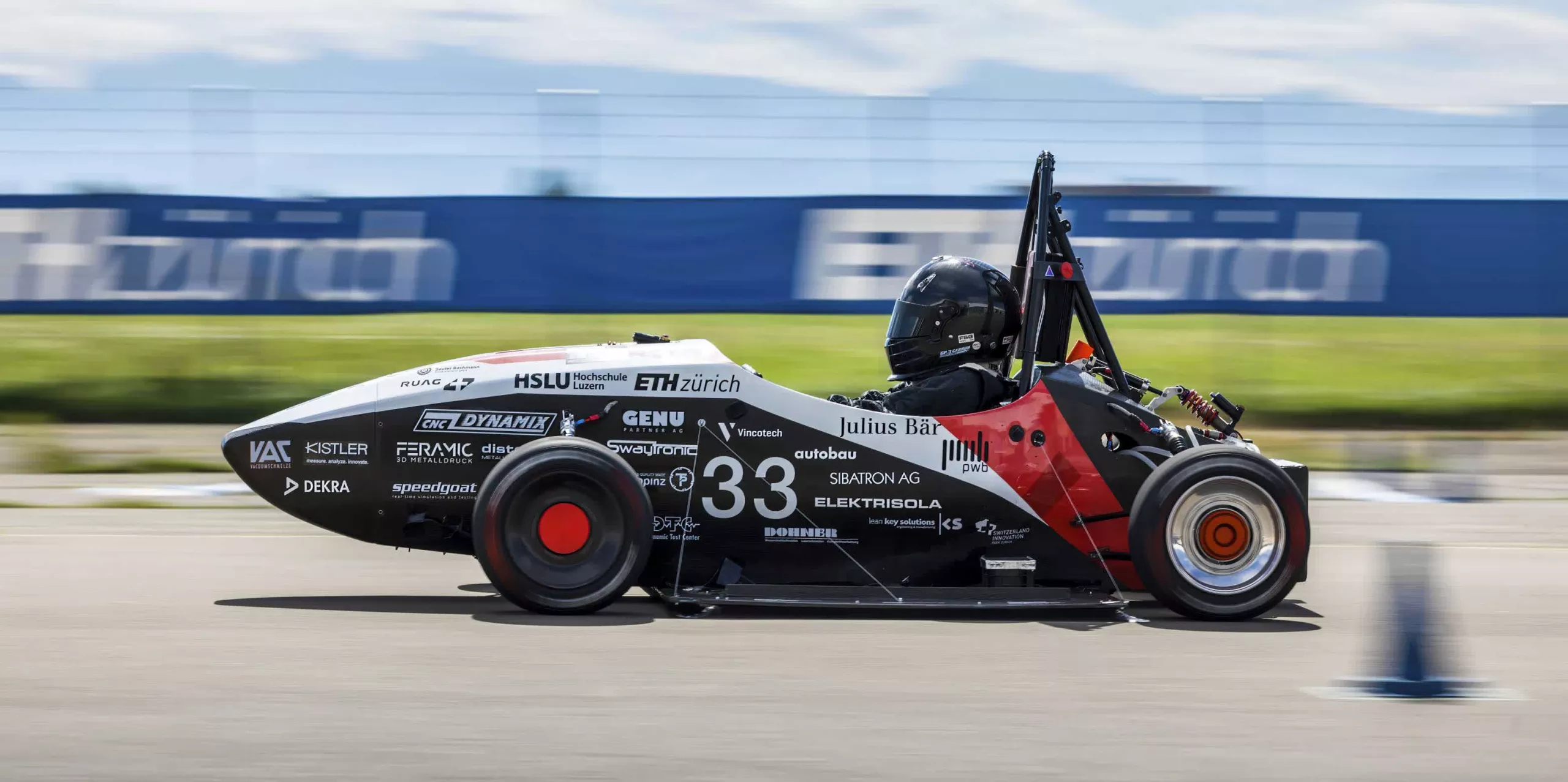In a nutshell: Every September, the Guinness Book of World Records sits in on a little drag race between college students. The seat is reserved because these mostly untelevised races are known for pushing the absolute limits of tiny electric cars, and frequently, a team makes acceleration history.
Applied sciences students from ETH Zurich and Lucerne University have broken the world record for acceleration in an electric car. The University of Stuttgart held the previous record, set last year when it sent its car screaming down the track, going from zero to 100 km/h (62.15 mph) in 1.461 of a second. This week, the students from Zurich crushed that showing with a time of just under one second (0.956 of a second) and a distance of 12.3 meters.
The students are Academic Motorsports Club Zurich (AMZ) members and spent a year building the car they named "Mythen." The team suffered several setbacks and had to spend every minute of their free time tuning and swapping components. All their hard work paid off as driver Kate Maggetti set the world acceleration record for electric vehicles in front of Guinness judges on a test track in Duebendorf, Switzerland.
"Working on the project in addition to my studies was very intense. But even so, it was a lot of fun working with other students to continually produce new solutions and put into practice what we learned in class. And, of course, it is an absolutely unique experience to be involved in a world record," said AMZ head Yann Bernard.
Despite all its sponsor decals, Mythen looks more like a go-cart than a race car, but that is intentional. To break the world record, the team needed to make a chassis small and light enough that their 240-kilowatt motors could propel it at incredible speed.
The team built and optimized all Mythen's components from scratch, including the PCBs, chassis, and battery. The chassis was formed from carbon and aluminum, and the car only weighs 140 kilos (309 pounds). The drivetrain consists of four-wheel hub motors running at a total of 326 horsepower.
Of course, all the horsepower in the world does you no good if you can't transfer that power to the ground. Aerodynamics was one of the most challenging aspects of Mythen's design.
"But power isn't the only thing that matters when it comes to setting an acceleration record – effectively transferring that power to the ground is also key," said AMZ's head of aerodynamics, Dario Messerli. "The ground effect alone practically doubles the contact force."
Since spoilers and wings only work above certain speeds, the AMZ team devised aerodynamics under the car that effectively suck it to the track right off the line. The students' solution created nearly doubled the downward force as a comparable car.
The students do not expect to hold on to the record for long. The event is held every September, with teams learning more from the year prior. The AMZ team has already held the record twice – once in 2014 and again in 2016. The Swiss students expect their rivals from the University of Stuttgart to put on a stronger showing next year. So they must work just as hard to maintain their hard-fought record.
